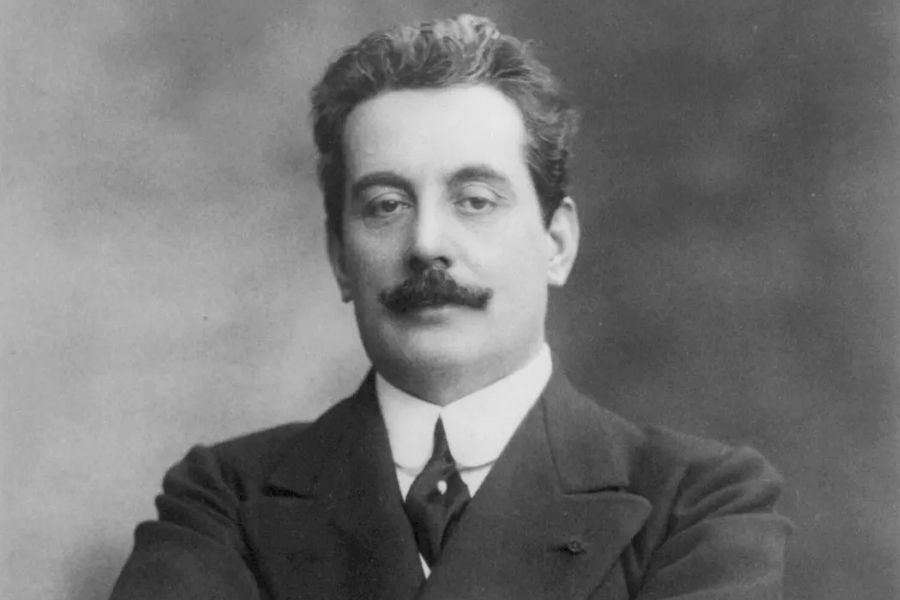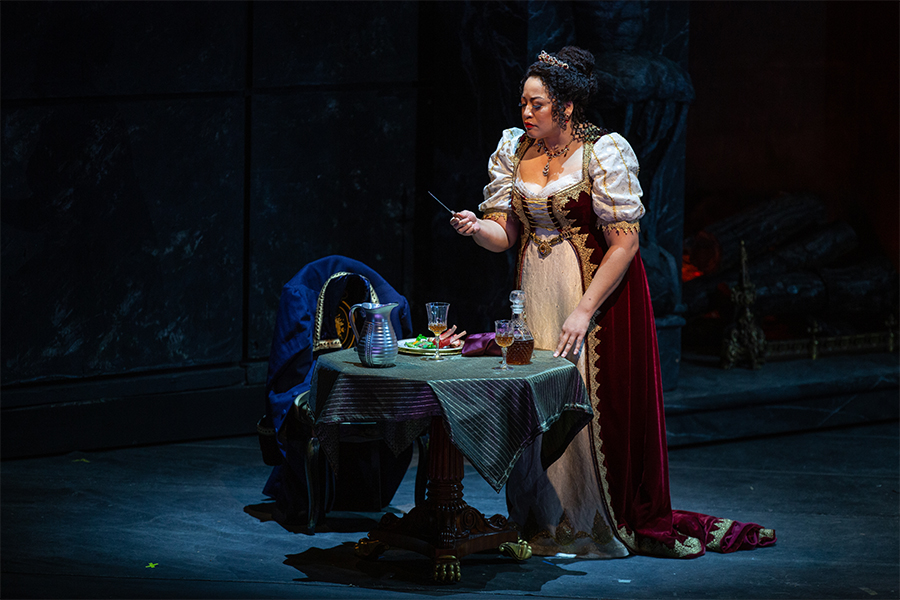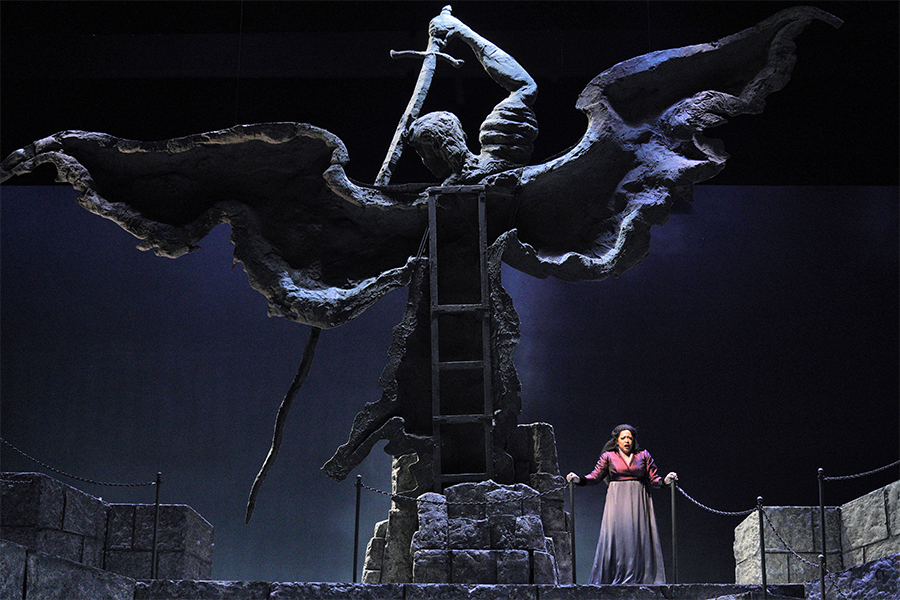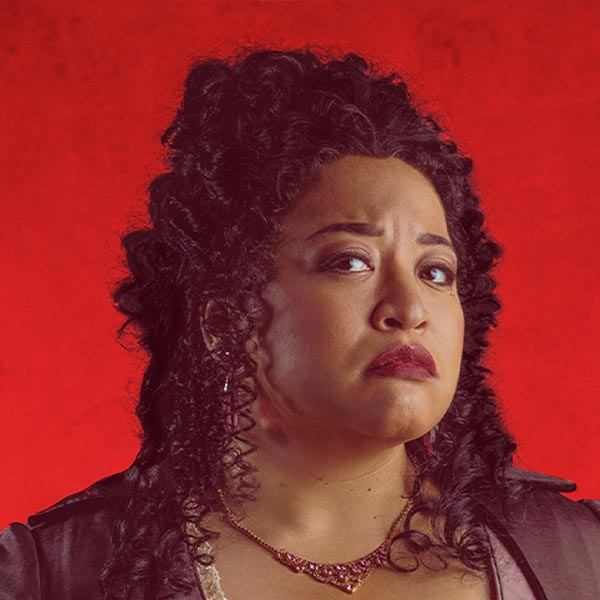March 10, 2022
The making of Tosca
The phrase “Puccini heroine” immediately conjures up an image of a woman suffering for love, full of self-destruction and headed for a terrible end — all while singing extraordinarily beautiful music. They are mostly victims of an adverse and cruel destiny, and thus associated with a poignant melancholy — even a constant feeling of inadequacy. But what did they mean to Giacomo Puccini (1858-1924) himself? Why did he create such enduring, but such heartbreaking characters?
In the first decades after Puccini’s death, scholars and critics began to analyze the composer’s female figures through various lenses. An early landmark was Puccini: A Critical Biography (London, Duckworth 1958) by Mosco Carner, an Austrian-born British musicologist and conductor. For Carner, Puccini’s heroine creations resulted from the composer’s fixation on a maternal figure (Puccini lost his father when he was five; he and his mother maintained a close and affectionate relationship until the end of her days). An obsession with the dominant mother renders fulfilled love with another woman an impossibility, except within a framework of guilt. Puccini’s heroines would therefore need to be punished for having loved.
However fascinating this psychoanalytical hypothesis may be, it seems both too strictly connected to the personality of the composer and too far removed from the conventions of his era. What’s more, as much as the major heroines — Mimì, Butterfly, Turandot, and, of course, Tosca — have many similar characteristics, they also possess extraordinary individuality. They each occupy a precise and compelling place in the development of the operatic production of the composer. In numerous articles (notably collected in L’albero del bene e del male, Pisa, Maria Pacini Fazzi, 2000), Italian music critic and Puccini expert Fedele d’Amico compellingly frees the tragic characters from Puccini’s personality, tethering them instead to the breathtaking modernity of his musical language.

Composer Giacomo Puccini
As Puccini himself becomes more aware of his own artistic abilities and his inventive power as a melodist, the model of the woman who “lives and dies for love” grows in refinement, complexity, and musical strength. The progression is evident from the role of innocent Anna in Puccini’s first opera Le Villi (1884) to little Liù in his unfinished masterpiece Turandot (premiered in 1926, 17 months after Puccini’s death), and of course appears most vividly in Puccini’s greatest female roles. Nowhere is the mastery and complexity of Puccini’s characterizations more beautifully rendered than in Tosca, one of the heroines most strongly imprinted in the collective imagination, and for whom we are here now, ready to be conquered again by her daring vitality.
Immediately after the 1889 premier of Edgar, the composer’s second major work, Puccini had begun to think about La Tosca as a suitable subject. The Victorien Sardou drama had originally been written especially for the famous actress Sarah Bernhardt, who debuted it in Paris at the Théatre de la Porte Saint-Martin, November 1887. Ferdinando Fontana, the librettist of Puccini’s first two operas, suggested writing an opera on this drama and Puccini was immediately very enthusiastic. In a letter to Giulio Ricordi, on 7th May 1889, the composer asked his publisher to obtain the rights for the libretto: “...I’m thinking of Tosca! I beg you to take the necessary steps to obtain Sardou’s permission before abandoning the idea, which would greatly sadden me, for in this Tosca I see the opera I need, one whose proportions are not excessive, either as performance or as something giving rise to the usual superabundance of music” (Gara, Carteggi pucciniani, Milan, Ricordi, 1958).
Ricordi tried straightaway to contact Sardou through his French agent, but it was some time before the contract was concluded. Approximately a year later, Puccini had occasion to see La Tosca with Bernhardt in Milan. Although he understood little of the French, he became newly enthusiastic. So in 1889, he and Ricordi (after having excluded a deeply offended Fontana) entrusted Luigi Illica to write a libretto from Sardou’s play.
Illica worked on the libretto during 1891 and was still busy when Puccini began to compose Manon Lescaut (1893). At some point, Puccini abandoned the Tosca project, and Illica’s libretto was offered by Ricordi to another composer in his company, Alberto Franchetti. In October 1894 Illica and Franchetti visited Paris to show Sardou the final draft of the libretto and to obtain his approval. Giuseppe Verdi, in Paris for the French première of his Otello, was also present at the meeting and expressed great admiration for the work.

Michelle Bradley in her role debut as Floria Tosca
It is not known exactly what reawakened Puccini’s interest in Tosca (the title chosen by Puccini and his librettists instead of La Tosca, the original title of Sardou’s drama). But his enthusiasm seems to have induced Ricordi to return the libretto to his star composer. In any case, by March 1895 Franchetti had given up on the opera because he did not feel up to the task. A new contract was drawn up and Puccini began work in earnest. As with the successful La bohème (1896), Illica brought in Giuseppe Giacosa to put the prose into verse, and the libretto was heavily reworked for Puccini’s dramatic needs.
Tosca was performed at the Teatro Costanzi in Rome on January 14, 1900, in the presence of Queen Margherita, composers Franchetti, Pietro Mascagni, and Francesco Cilea, among others, and journalists from all over the world. The production was overseen with great care by Giulio Ricordi’s son, Tito, who commissioned set designs from Adolfo Hohenstein. The conductor was Leopoldo Mugnone, and Hariclea Darclée sang the principal role. The tense climate at the première was further increased by the rumor, which later turned out to be false, that someone would throw a bomb into the theater.
The public’s reaction, apart from some encores, was not particularly warm, at first. But over 16 repeat performances, and numerous others the following year in other Italian cities and abroad, audiences grew more and more enthusiastic. Tosca is now one of the most performed operas in the world, but for decades the critical reviews (including that of Gustav Mahler, who left a 1903 performance before it was finished) were very hard on this particular masterpiece.

The finale of Puccini's Tosca
At first, Tosca may seem completely different from Puccini ́s previous heroines: she is a famous primadonna who performs in the Eternal City, a sensual, enterprising, free, and haughty individual. Her entrance — we hear her in the wings shouting Mario’s name three times before we see her beautiful features — is immediately impetuous, inquisitive, and ardent.
But Tosca is also a very pious woman in papal Rome, devoted to the Madonna to whom she offers flowers, seeking forgiveness for the kisses she exchanges in church with Cavaradossi, and for the immoral relationship of free love she lives with him. She is passionately jealous, and therefore fragile and vulnerable.
Her Act II prayer-lament aria ”Vissi d’Arte,” one of the great heights in the repertoire, has the effect of suspending the relentless rhythm of the tragic events, almost transporting us to a place inside the heroine’s mind. Her situation is dire, but the music — much of it reminiscent of material already heard, but here reworked by the composer — creates a potent connection with her more carefree recent past. A piece of splendid vocal effusion, the aria is introspective and sincerely religious — simultaneously full of both faith and lamentation. Until this moment, we have seen Tosca as a strong and passionate woman; here, a window opens on her weaknesses. The music underscores the character’s multifaceted nature. Sadly, it becomes clear that, for all her dynamic traits, she is also a simple, small girl, defined by love, who will suffer the same cruel fate as other Puccini heroines. It is astonishing to learn that, concerned about slowing the action, Puccini seriously considered cutting the aria. The master dramatist kept it in.
Anna, the protagonist of Le Villi and the first in the series of the composer’s fragile heroines, was an ethereal and innocent creature, possessed also of those traits that became common to later heroines: her total dedication to love; an ineluctable path toward personal sacrifice; and nearly impossible surrounding circumstances. The successive heroines, Floria Tosca among them, develop this archetypal model to a highly advanced level, becoming far more than emblems of Puccini’s own psyche or mere types. Tosca’s instincts and strong temperamental contradictions, brought alive through the composer’s sophisticated music, combine to present us with a real woman, whose vital force still remains fervent and captivating today.
Daniela Costa is currently Professor of Italian Opera at the Florence Center of the UNC Chapel Hill Burch Honors program.
March 12 – April 10, 2022
Tosca
Tosca
A diva who has all of Rome at her feet. A woman who takes charge of her life and fights for what she wants. A heroine who is brave and loving, extravagantly emotional, yet utterly irresistible. Floria Tosca is all these things. She’s loved by Mario Cavaradossi, the revolutionary, and lusted after by Baron Scarpia, Rome’s vicious police chief. Puccini’s lushly grand-scale music illuminates these characters, and the entire opera bursts with a theatricality that makes Tosca a favorite of audiences everywhere.
Header: Lyric's 2021/22 production of Puccini's Tosca, directed by Louisa Muller. Credit: Andrew Cioffi
All other photos: Encyclopedia Britannica Giacomo Puccini, 1908. Library of Congress, Washington, D.C.; A. Dupont, NY (dig. id. cph 3a40628), Andrew Cioffi, Cory Weaver

